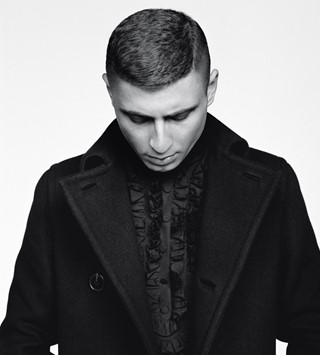Sterling Ruby: “Let’s Go Full Cult!”
- PhotographyMario Sorrenti
- StylingSterling Ruby
- TextJo-Ann Furniss
Jo-Ann Furniss interviews Sterling Ruby, one of the great artists – with Mario Sorrenti capturing his world the way it should be and Ruby himself doing styling duty and dressing his team in his designs
This article is taken from the Summer/Autumn 2020 issue of Another Man:
“I APPRECIATE THE DRIVE MORE THAN I NEED A GOAL”
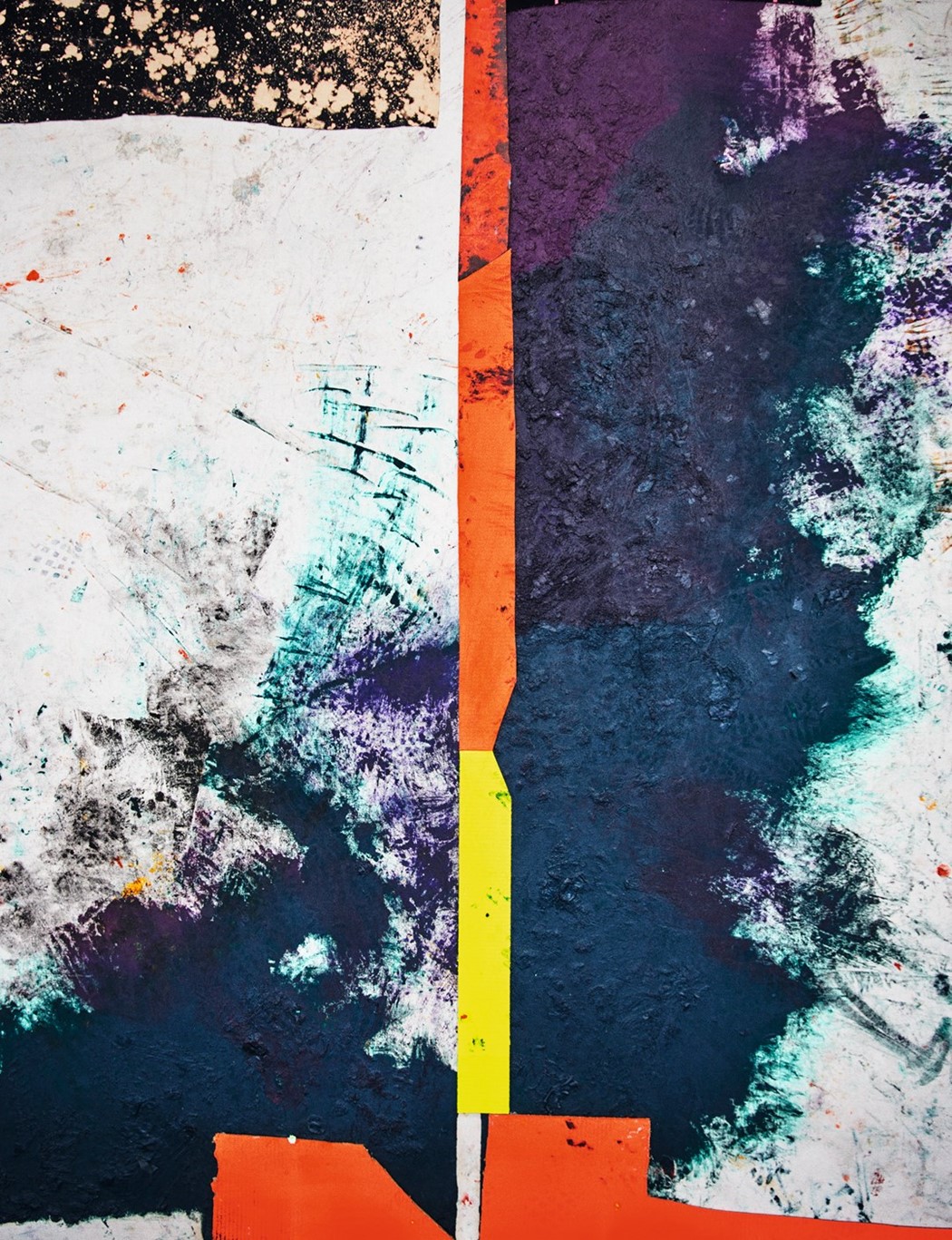
It is 1st February 2020 in Los Angeles. The sun is shining, the sky is blue and it is ludicrously warm. I am travelling to Vernon, five miles from downtown LA, and as I will later find out from Sterling Ruby, this place was the basis for the corrupt town Vinci in the second series of True Detective – location filming went on near his studio. “What kind of a place is Vernon?” I ask the Uber driver – thinking he will be the fount of all knowledge. “I don’t know,” he shrugs. Although it becomes apparent quite quickly that it is one of those in-between locales that Ruby is fond of – neither here nor there, a hinterland of oddness. Unusually, it is a city with a population of 113 (in 2017) with around 50,000 people travelling to work there each day. There are factories making elastic, sealant, plastic wrap and plush toys – there’s Kellytoy Inc, which I take as a sign, for Sterling Ruby had once been artist Mike Kelley’s teaching assistant at college. Of course, Kelley was fond of using battered plush toys as found objects. Then there are the apparel makers: ‘Blue Jeans’, ‘Fashion Nova’, ‘Julia’ and ‘Hello Miss’ amongst many. ‘Basic’ says one sign, illustrated in thick, mock yarn. That says it all really.
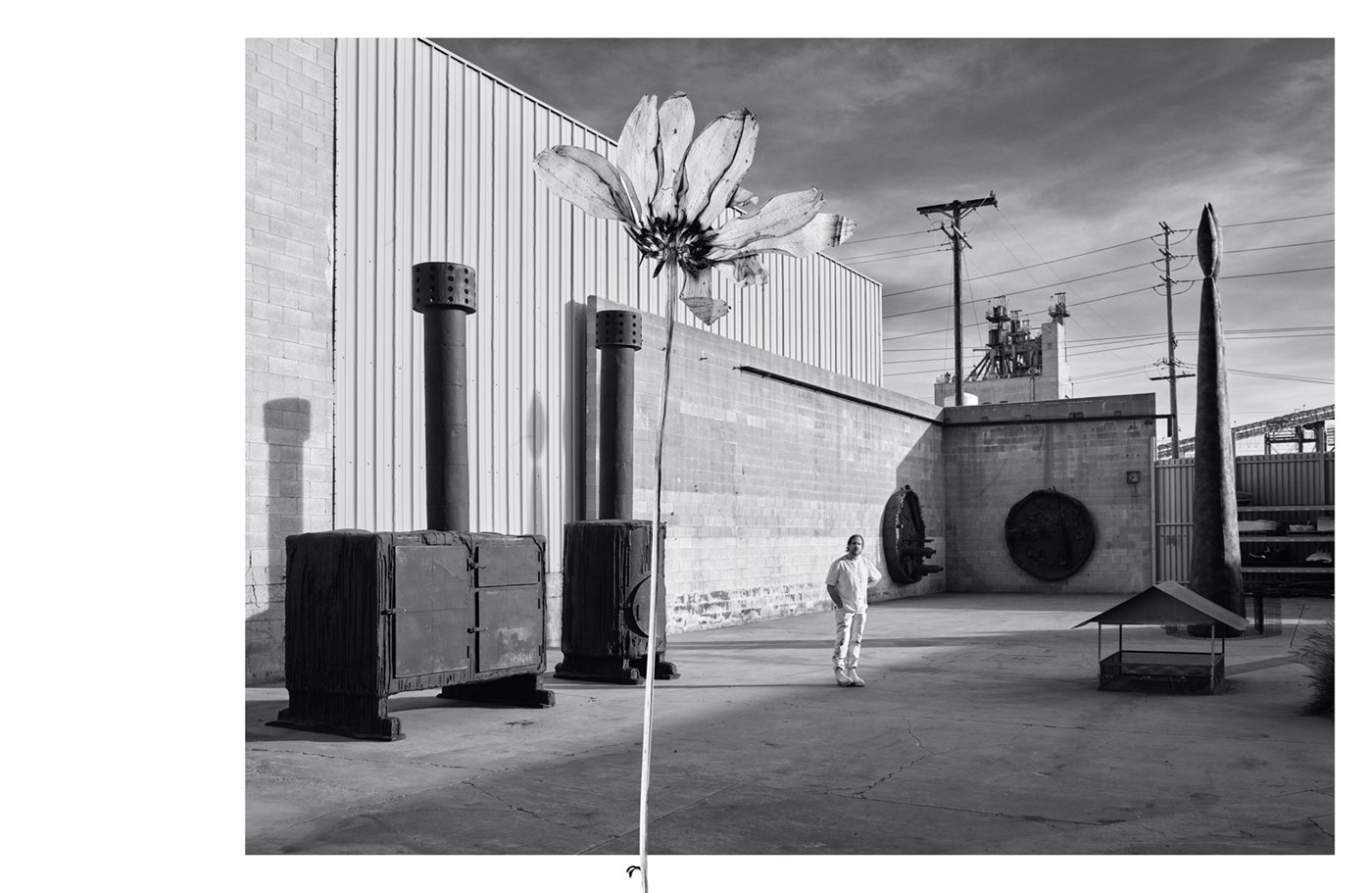
Soon after a seemingly endless line-up of 99c Store trucks, there is Sterling Ruby’s high-walled studio complex. Blankly low key from the outside, and quite extraordinary on the inside. This is where our story is photographed by Mario Sorrenti with Ruby’s team and family as models. Ruby appears in all white, his own designs – full 90s boy-band mode by way of being run over by a truck, or contemporary, avant-garde cult leader. I can’t help but observe that his female assistants have something of the Manson Family about them... “I’m going to dress everyone,” says Ruby, before laughing and declaring: “Let’s go full cult!”
It’s a great day, with the artist relishing his styling duties, insisting his entire team don the S.R. Studio LA. CA. collection – some are even in the middle of making and yet wearing at the same time – Meghan, his right hand on the fashion side, rolling her eyes and saying, “That’s meant to go to a store.” But there is no stopping Ruby. Sorrenti documents all, or more rightly massages this fashion-docudrama into the shoot you see here, getting the team to clamber over scrap metal, wander through the galleries and grounds, hoist tarps and move around giant stalagmite sculptures with the names Miss Crpt and Juvenile – there’s no stopping him either. Ruby will eventually provide the collage, with plants all native to this part of California, between life and death, rural and urban, all very much part of his life and his artwork.
By the end of the day, I am obsessed with Vernon and I present Ruby with some Googled statistics: The overall crime rate in Vernon is 13963 per cent higher than the national average. For every 100,000 people, there are 994.06 daily crimes that occur in Vernon. Vernon is safer than 0 per cent of the cities in the United States. In Vernon you have a 1 in 1 chance of becoming a victim of crime.
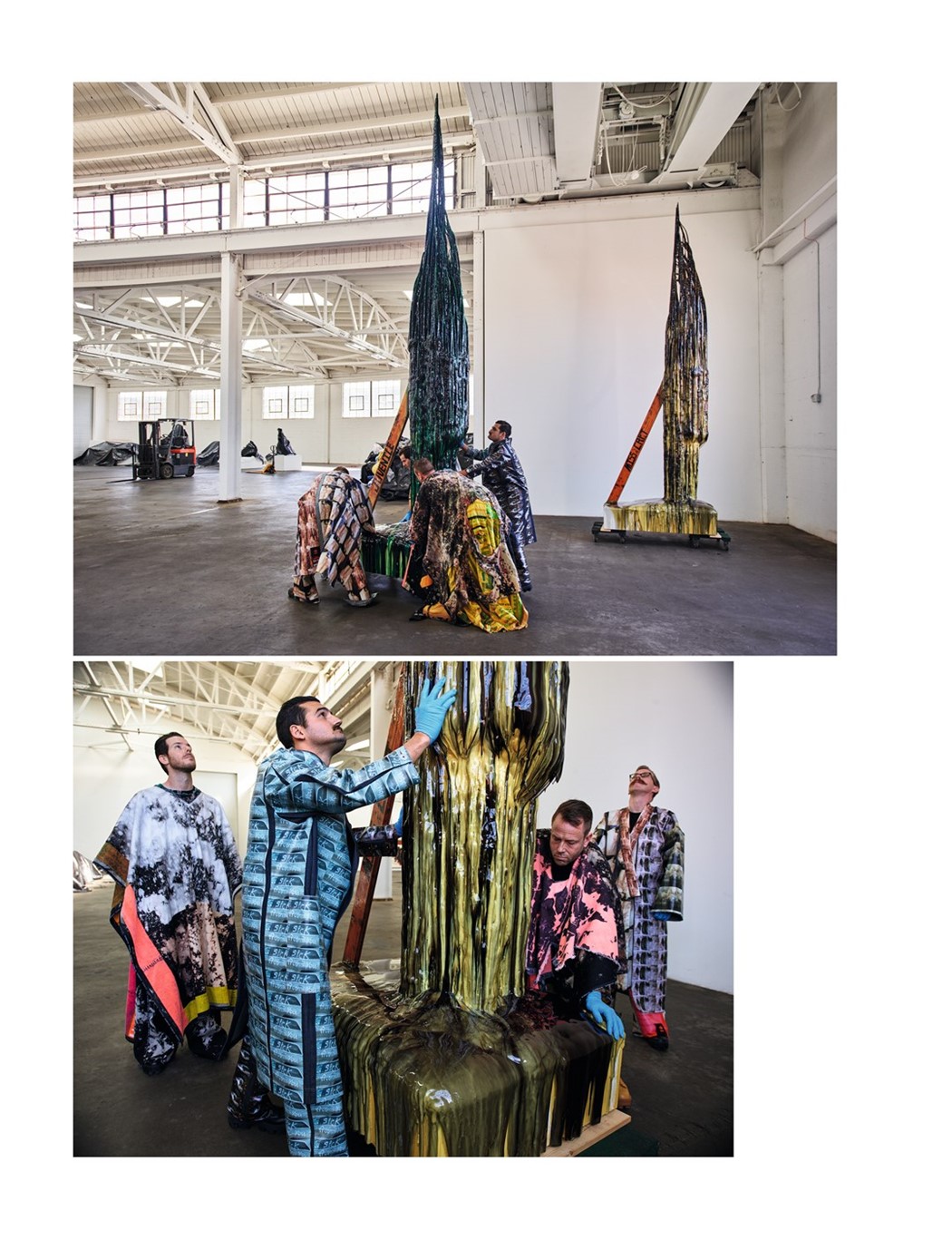
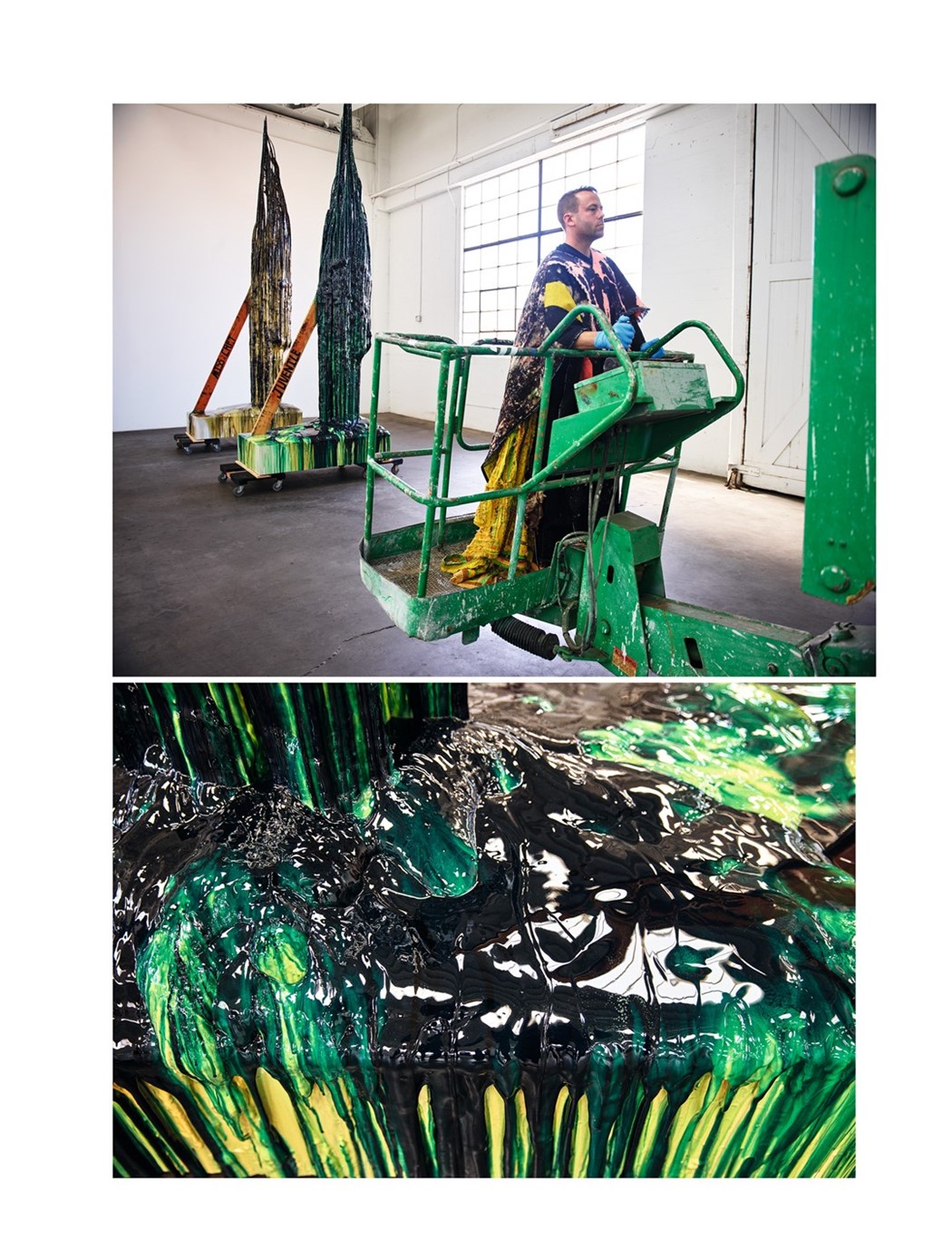
Perhaps needless to say, Ruby is the only artist who has his studio in this weird, small, seemingly crime-ridden city. He’s the only one for whom this place makes absolute sense. At first seen as something of an oddity, he has now been taken to the hearts of the city council – they are the ones who insisted he have a higher perimeter wall – I think we now know why – even though it was against their own regulations. And when the fire department had to attend to a serious accident here, with a truck crashing through the studio wall, they were above all concerned for the artwork, yelling, “Save the paintings, save the paintings!” Typically, Ruby wanted to use the wreckage for his future work.
Guy Trebay in the New York Times once described Sterling Ruby as an “apex predator” in the art world, and Michael Shnayerson in Boom: Mad Money, Mega Dealers, and the Rise of Contemporary Art, paints a rather vivid – for that read bitchy – portrait of Ruby, as ensconced in his gargantuan studio while manipulating the gallery system, like some sort of Bond villain. Both descriptions are, in my experience, highly erroneous. There are plenty of ruthless, despicable (badly dressed) Bond villains in the art world; Sterling Ruby is not one of them. He’s the opposite; he’s an absolute joy to be around (and stylish). For while Ruby is a serious artist – arguably the preeminent artist of his generation – he doesn’t take himself too seriously. He’s also no doctrinaire art snob, rather honestly operating in the reality of art and commerce, and understanding both the art and fashion worlds. For now, Ruby is also a fully-fledged fashion designer and a really very good one, and this too he is doing on his own terms and as part of his practice. He is refusing to bend to seasonal whims and the merry-go-round of the show schedule; he is refusing to play the fashion game as we know it and is helping to establish the rules of a new one. And he is doing this from his admittedly gargantuan studio – it actually needs to be, for the vastness of the work he produces both in terms of actual size and scope – in the less than illustrious Vernon, this industrial enclave on the outskirts of LA.
Maybe it’s because he was an army brat, born on an American military base in Germany in the 1970s; maybe it was moving to Baltimore, and then to New Freedom, in the hinterland of rural Pennsylvania; then again, it could be his ultimate pilgrimage to Los Angeles, still the artist’s home today and site of his rise to unconventional prominence in the art world. There is something of the dislocated outsider in Sterling Ruby’s work and life: He refuses to play by the rules of the art or fashion establishment. And if that sounds Trumpian, it wasn’t meant to; rather he enjoys the in-betweens and revels in the opposites and extremes, and while not quite against interpretation, he certainly seems to bridle at classification.
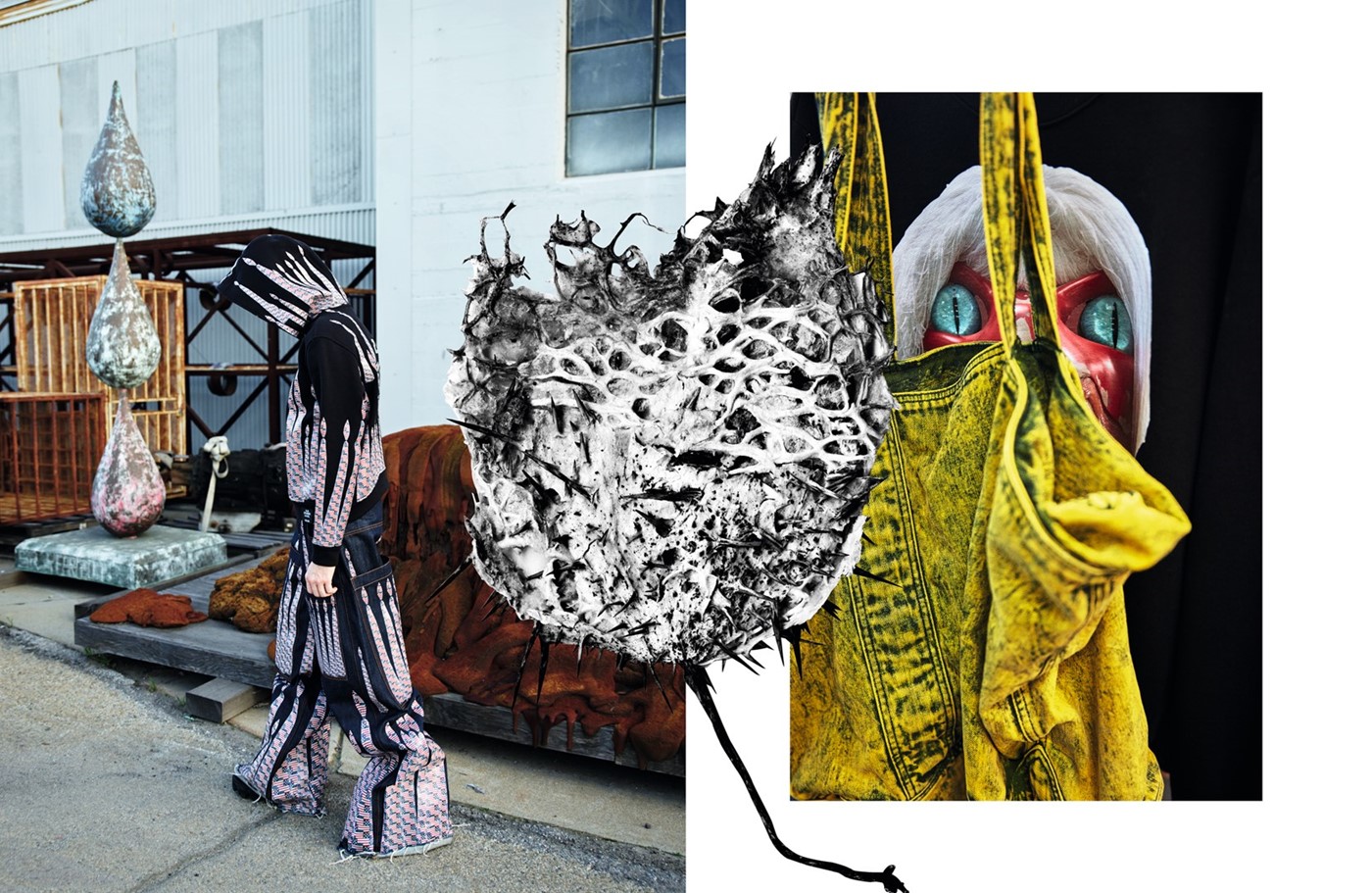
“The psychosis of LA is so different,” he says; the artist frequently talks about pathologies and psychoses as related to cities, but it is something that can be seen as a metaphor for his own work. “Los Angeles is the perfect city because it is not a real city – it’s the geography and diversity of the place. When I first moved to LA, I was fascinated by the extremely rural patches with people living on them, and then suddenly there could be a luxury high-rise condo. There are mountains with snow, the desert, downtown, and the beach – it’s a schizophrenic landscape.”
And so too Ruby’s use of multiple mediums could be seen as part of a “schizophrenic landscape”; from the connotations of feminine craft in ceramics, textiles and clothing, to the hyper masculine sculptures and vast paintings – and then there are the crosses between the two, the soft sculptures and mobiles. Each has a vast, dedicated space in his studio. It is a true mark of Sterling Ruby the artist that his signature is instantly recognisable in all; both mediums and objects.
It is now a few days after the shoot, and we are sat in the office section of the studio complex. Some of Ruby’s written works adorn the walls around the seating area – yes, he writes too. He has been worrying about the disturbing crime statistics I had rather gleefully presented him with. “That was a real shocker,” he says. “I hadn’t read any statistics recently.” Now I feel bad.
“THE ESSENCE OF SKATEBOARDING THAT I LIKED THE MOST WAS THE KIND OF VAGABOND ASPECT OF TRAVEL. THAT YOU JUST KIND OF MOSEY AROUND. YOU HAD NO DIRECTION; YOU JUST AMBLED AIMLESSLY UNTIL YOU HIT SOMETHING. I DIDN’T GET WHY THAT MADE ME SO HAPPY FOR A LONG TIME. BUT ULTIMATELY, AS I BECAME AN ADULT, AND REALLY UNDERSTOOD MY DESIRE, IT WAS TO BE TRANSIENT, TO ALWAYS BE DRIVEN. NOT TO BE IN THIS PLACE OF STASIS WHERE YOU BECOME... COMPLACENT”
That’s because Sterling Ruby is a worrier in the best possible way. He looks on art as his vocation in life. He does not rest on his laurels. He does not think of himself as ‘The Big I Am’, in fact, just the opposite. He is continuously restless, probing his existence as an artist and discovering new things and mediums that make him tick – one of the latest being the embracement of a full fashion line. And yet, he still worries. As he puts it: “I appreciate the drive more than I need a goal.”
At the moment he is worrying about who his audience is: “Sometimes it’s really hard because I don’t know who my audience is. I don’t know who it is that’s getting it. And that’s as I see fashion become bigger and bigger and more accessible to a younger generation and I see art become bigger and bigger and become more accessible to a younger generation, I don’t necessarily know whether it’s because of the oddness of it.”
Of course, Ruby wants to preserve the oddness of what he does and his existence on his own terms. And this started from a very early age, as a teenager, even before he found his calling as an artist.
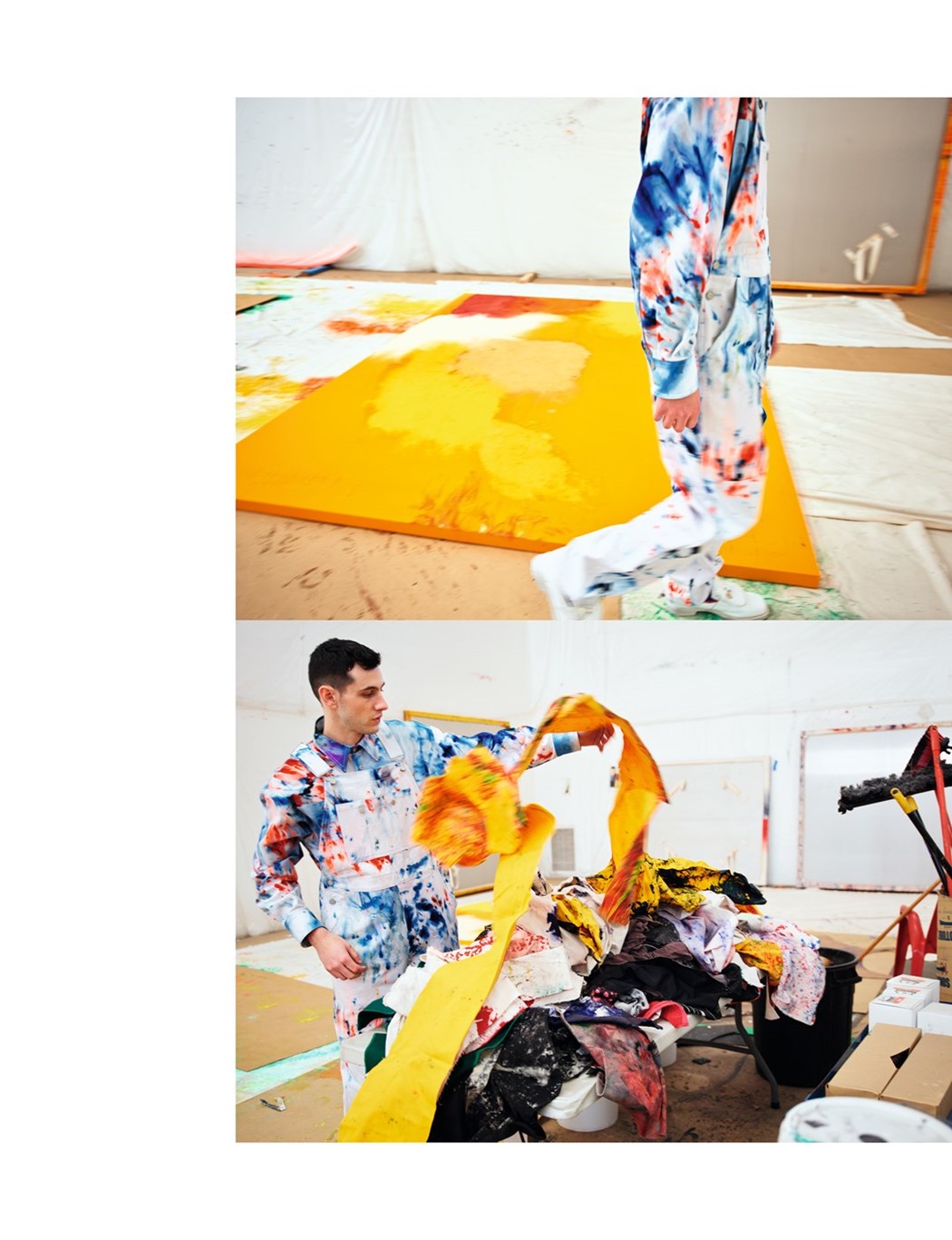
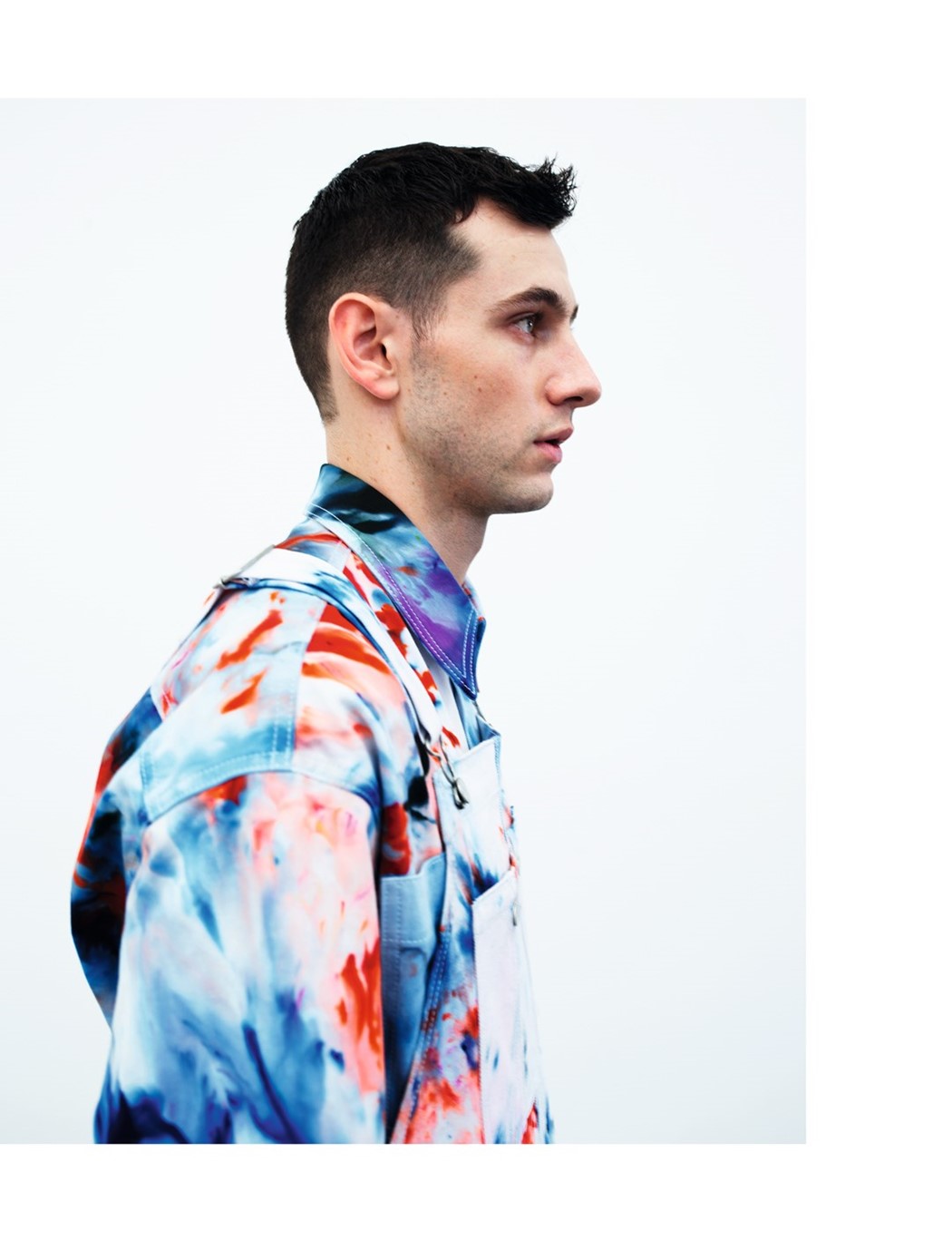
“I have this weird skateboard analogy,” he explains. “For the longest time, that was it for me, that was the great relief. This was in the 1980s, when I would read Transworld Skateboarding magazine and Thrasher, those were the biggest extensions of rebellion that I could get my hands on in this tiny little town where I grew up. I would get hold of a magazine and it all made sense. Over the years, travelling, I wound up skating for different companies, meeting a lot of people who were just like me in a way, it was amazing, this really great group of misfits...”
So you were on that pro-circuit?
“I was for a while,” he continues. “But over the course of a couple of years, I realised that the people in the van had changed. The people in the van were no longer these punk misfits, basically they were athletes who had decided that skateboarding was another extension of team sports and they treated it just the same. As if they were on a football team. They were training in a way that was no different from basketball, soccer, football... So I just stopped. It didn’t make any sense for me any more. That’s not what I thought it was. And it’s starting to feel a little bit like that now, you know? Lately that gut reaction to all of this seems to be similar to that moment that I had when I was pretty young and I realised that – and I was always in a van, all summer, every summer I was in a van – the people in the van just changed, overnight.”
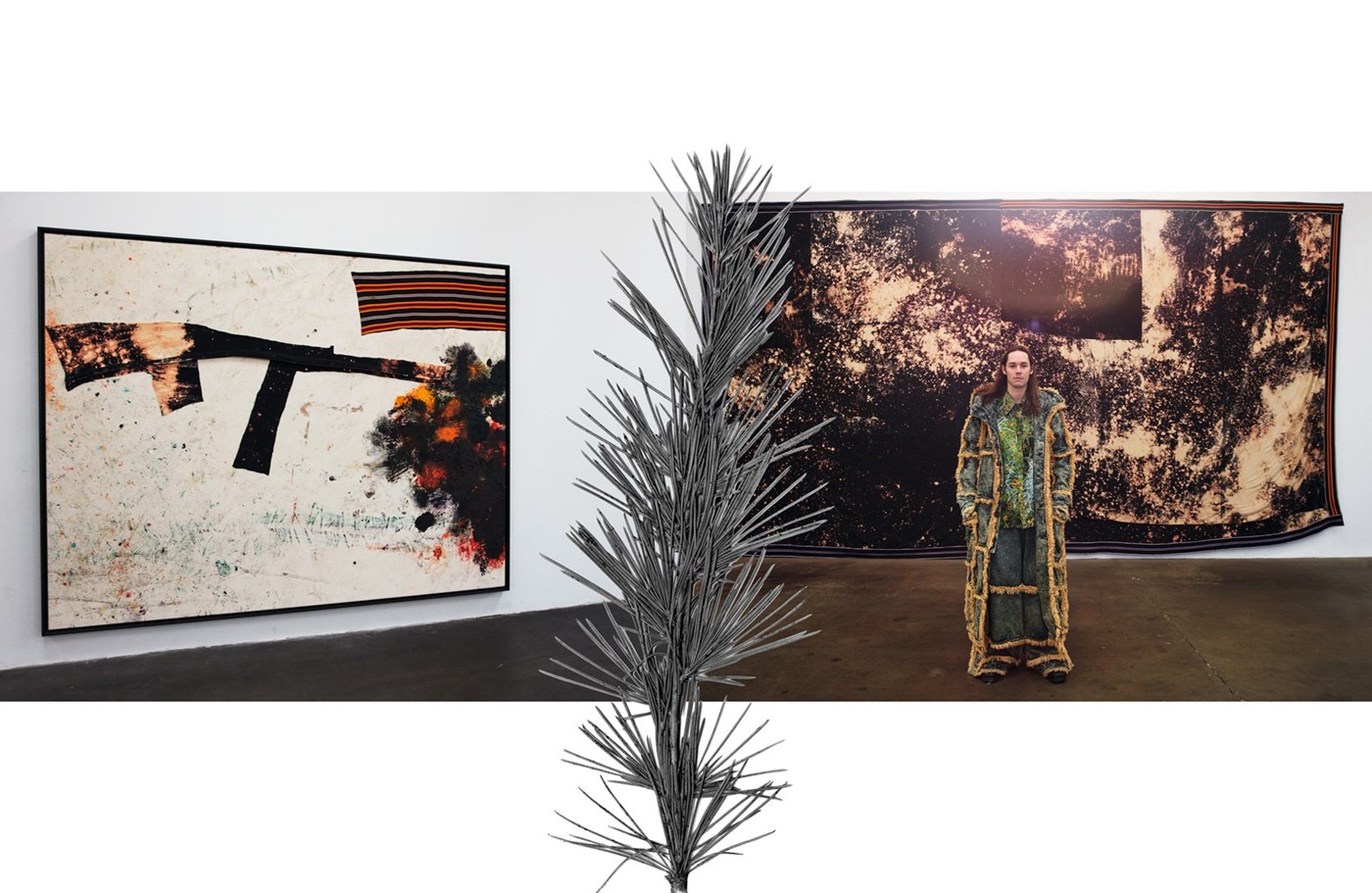
In short, for Ruby: “It’s that scenario where the punk skateboarders became the football skateboarders and the art collectors became the investment brokers.”
At heart, Sterling Ruby is still the punk skateboarder with the gang of brilliant misfits in his studio rather than in a van. And he is determined to preserve the renegade, unregimented aspect of what he does:
“The essence of skateboarding that I liked the most was the kind of vagabond aspect of travel. That you just kind of mosey around. You had no direction; you just ambled aimlessly until you hit something. I didn’t get why that made me so happy for a long time. But ultimately, as I became an adult, and really understood my desire, it was to be transient, to always be driven. Not to be in this place of stasis where you become... complacent. I now equate it as being my first total experience of that, in skateboarding.”
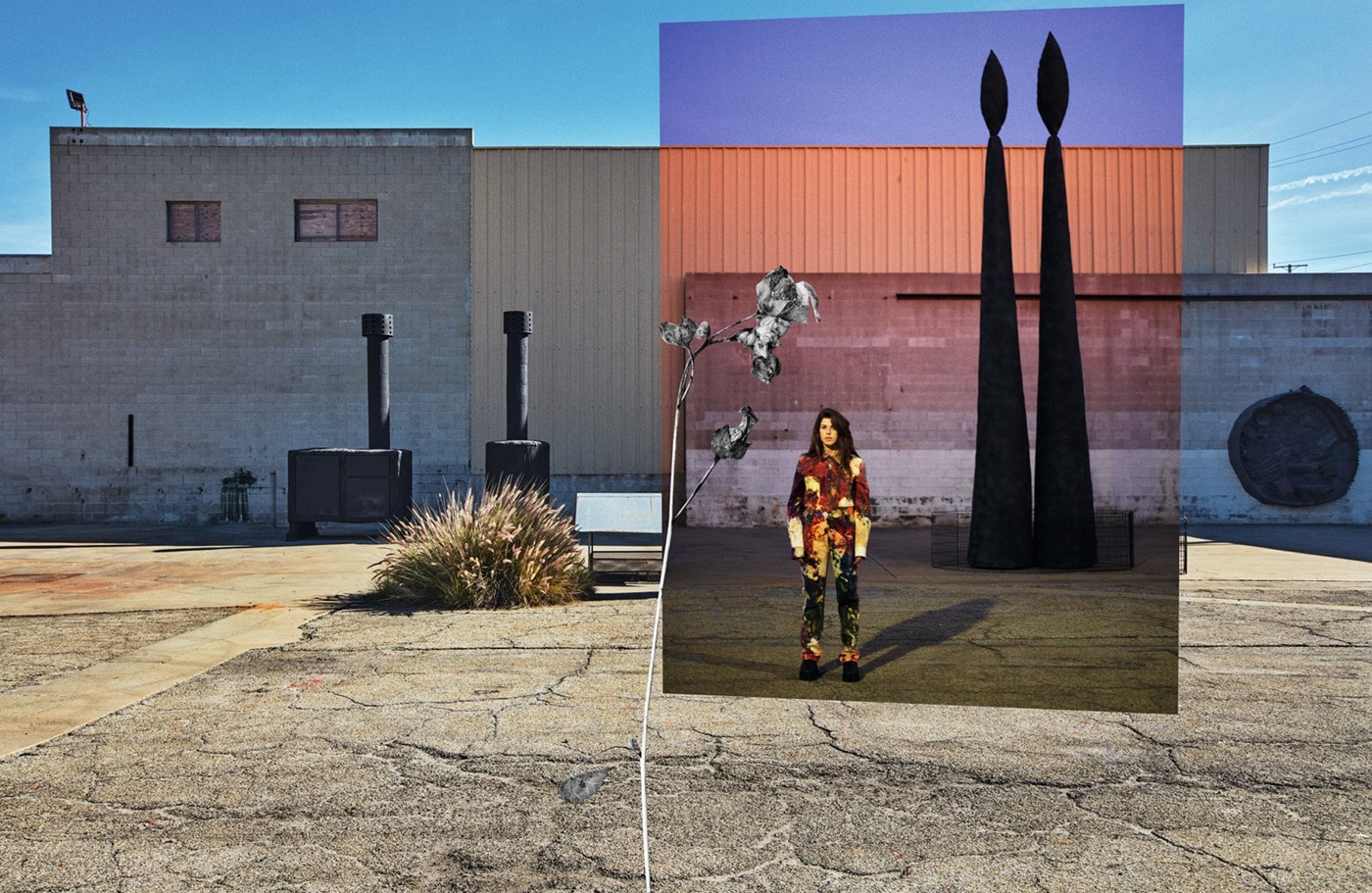
Hence the transient nature of Sterling Ruby’s art practice; always on the move, always discovering new things, always pushing himself and never taking it for granted. Always different, always the same. Now it’s just a question of what’s in store next...
HAIR Dallin James at The Wall Group MAKE UP Zenia Jaeger at Streeters TALENT (in order of appearance) Sterling Ruby, Brian Chambers, Dylan DeRose, Nick Arens, Andrew Sexton, Tyler Britt, Reid Ulrich, Sonja Bartlett, Julia Holladay, Lena Desai, Celeste Voce, Morgan Upham, Ramona Jones, Melanie Schiff, Rosemary Ruby, David Michael Hershberger, David Perez, Claudia Ross, Meghan Roche DIGITAL TECHNICIAN Kotaro Kawashima LIGHTING TECHNICIAN Lars Beaulieu MAKEUP ASSISTANT Johanna Nomiey PRODUCTION Hest Inc. PRINTING Arc Lab Ltd. SPECIAL THANKS Sterling Ruby Studio
The Summer/Autumn 2020 ‘High Art Pop Culture’ issue of Another Man is now on sale internationally. Head here to buy a copy.
















